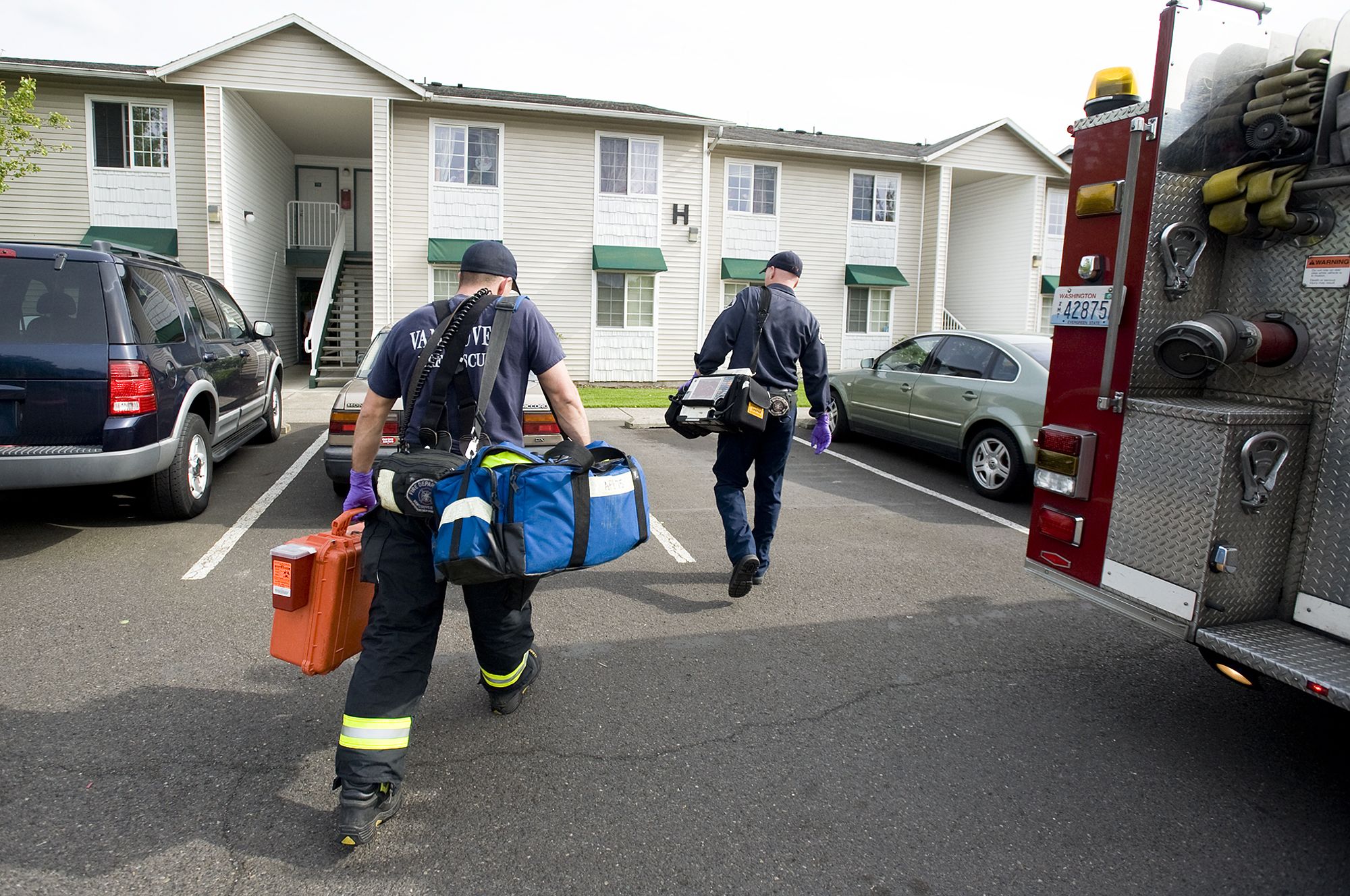Instead of dispatching a three-or-four person crew in a fire engine to a 911 call about someone complaining of back pain, the Vancouver Fire Department may test next year how well it works to send a firefighter-paramedic and a firefighter in a SUV.
It costs approximately $1.34 a mile to operate a SUV, compared to $7.47 a mile for a fire engine.
Sending smaller, faster vehicles to non-emergency medical calls was just one recommendation in a Fire Service Delivery Analysis, which was prepared by an 11-member community resource team that studied ways to stabilize the department’s budget without gutting services.
As with other local public service departments, the Vancouver Fire Department has consistently seen costs outpace revenues.
If the department continues with business as usual, its projected deficit of $1.65 million in 2013 is expected to be $4.69 million in 2018. By then, the city’s total projected deficit is $10 million.
By law, the city must have a balanced budget.
Vancouver Fire Chief Joe Molina and Deputy Chief Dan Olson gave a presentation on the advisory group’s recommendations Friday to the Vancouver City Council during a four-hour meeting.
Molina said he’d like to start April 1 doing a pilot program in which SUVs — Molina and Olson have offered their city-owned SUVs for the test — would respond to priority 3 and 4 medical calls. Fire engines would still be sent on the most critical medical calls, which are ranked priority 1 and 2.
Molina said the department will also be working to better coordinate with American Medical Response, which has the ambulance contract for Emergency Services District 2, which includes the city of Vancouver. For medical calls that only rate priority 5, perhaps just an ambulance would respond, Molina said.
Since 2010, 40 types of medical calls have been added to the fire department’s do-not-respond list, and the department may add another 15 types of calls.
All firefighters are trained emergency medical technicians, and some firefighters are also paramedics.
In 2011, 73 percent of the department’s calls were for emergency medical services or rescues. Only 4 percent of calls were fire-related, and 23 percent were for “other,” which includes false alarms and “good intent” calls. Councilor Jeanne Harris asked Molina why there were so many “other” calls.
“It’s the advent of the cell phone,” Molina said.
Examples of ailments that rate as priority 3 and 4 calls include back pain, fainting, near fainting, chest pain in someone older than 35, relatively minor assaults and falls and headaches due to an unknown cause, Olson said.
One point stressed Friday was the “community risk conundrum,” or, as it was put in the analysis, “At its heart, this is an issue of balancing risk with levels of fire protection service. Further service reductions at some point increase risk.”
Vancouver already falls below recommended staffing levels. The national average, measured by firefighters per 1,000 people, is 0.48.
Vancouver is at 0.16, Tacoma and Bellevue are at 0.33, and Spokane is at 0.28, according to the analysis.
Knowing the city won’t be in the position to add firefighters, the recommendations focus on how to make the smartest use of resources.
Other recommendations include having higher levels of staffing during peak call hours — call volume peaks at 5 p.m. — and reduce staffing during quieter times, such as between 3 and 5 a.m. That may wind up as a bargaining issue with the firefighter’s union, the analysis noted. For the long term, the group also recommends creating “an independent source of fire/EMS funding.”
The council briefly touched on a recommendation regarding the future of the city’s fire stations. Stations 1 and 2 in west Vancouver not only need seismic upgrades like many other of the city’s 10 stations, but need to be replaced because they are so old. The advisory group suggested studying whether it would be smart to consolidate those stations.
City Manager Eric Holmes said the council will take up the topic again early next year.
The members of the community resource team are Sharif Burdzik, vice president of Riverview Community Bank; Scott Deutsch, risk manager for Evergreen Public Schools; Mary Elkin of the Image neighborhood; Jim Faull of the Marrion neighborhood; Franklin Johnson of the Bennington neighborhood; Ross Montgomery of the Airport Green neighborhood; Jennifer Gray, union insurance representative from BCTGM Local 114; Dr. Lisa Morrison, medical director of Columbia United Providers; Larry Paulson, retired executive director of the Port of Vancouver; Randy Scheel, co-owner of Fort Vancouver Convalescent; and Elson Strahan, president of Fort Vancouver National Trust.
The team members are assisted by a technical resource team, which includes city administrators, fire department leaders and representatives from the firefighter’s union.
Stephanie Rice: 360-735-4508 or stephanie.rice@columbian.com.



